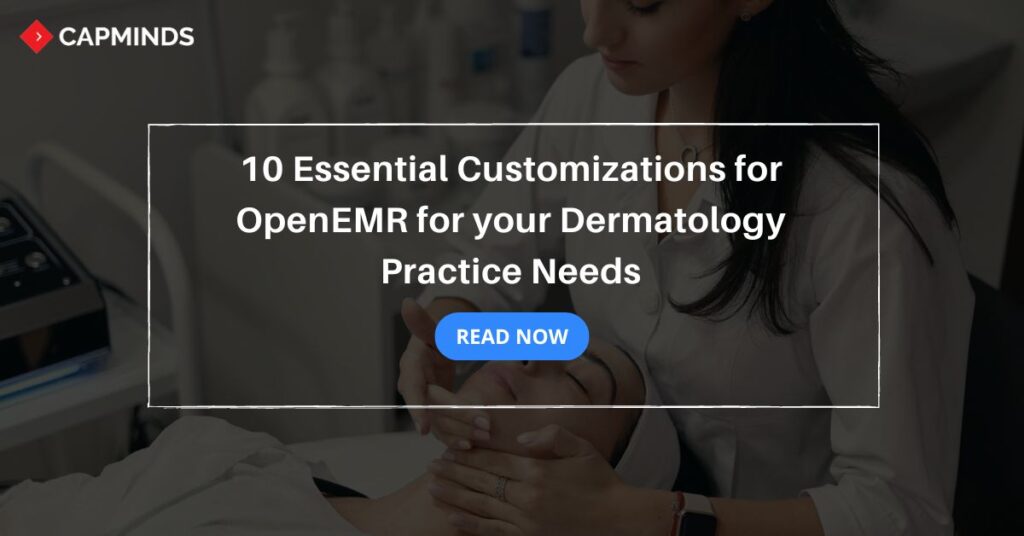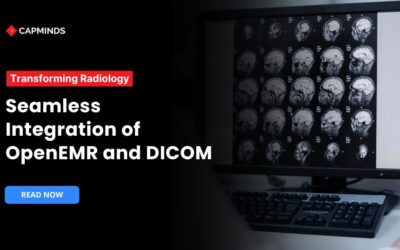10 Essential Customizations for OpenEMR for your Dermatology Practice Needs
Dermatology practices need more than just a generic EHR system. It requires a more tailored system that meets and streamlines their daily operation. OpenEMR, an open-source EMR system is highly flexible. This means that it can be customized to the dermatologist’s workflow.
From managing administrative operations to billing processes, OpenEMR can be customized. But what are all the essential OpenEMR customizations that are needed for dermatology practice? In this blog post, we’ll share the 10 essential OpenEMR customizations to help dermatology practice enhance daily operations.
10 OpenEMR Customization for Dermatology Practice
1. Custom Dermatology Templates
Medical documentation is the most important aspect of healthcare, especially dermatology. Because it mostly relies on documentation and imaging,
To streamline the aspect, use predefined templates tailored for dermatology-specific procedures such as skin biopsies, lesion excisions, and mole evaluations. These templates will help to:
- Standardize data entry
- Reduce the time physicians spend filling out patient records
- Enhance the accuracy of documentation
With custom templates in OpenEMR, dermatologists easily input information, track patient progress, and ensure all relevant clinical details are captured consistently.
Learn More about CapMinds OpenEMR Customization Service!
2. Seamless Integration with Patient Management Systems
OpenEMR can be integrated with platforms like WordPress for patient management. This is to streamline the registration process for new, established, and referral patients. Patients can book appointments, update their records, and communicate with the practice through a user-friendly interface.
For dermatology practices, such integrations make it easier to manage the patient flow which ensures timely appointments.
3. Voice-to-text transcription for Consultations
Voice-to-text transcription is one of the valuable OpenEMR customizations for a dermatology practice. Using this tool, dermatologists can record consultations and automatically convert them into structured data for approval in the EHR.
This customization reduces the need for manual data entry and improves the speed of documentation. Dermatologists can focus more on patient care, knowing that the consultation notes are accurately transcribed and ready for approval.
4. Integration with CRM for Marketing and Patient Relations
Integrating OpenEMR with a CRM allows dermatology practices to manage patient relationships. CRM integration enables practices to track referrals, send appointment reminders, and follow up with patients.
This connection also allows for targeted marketing efforts which helps practices promote specific dermatology services and maintain strong patient engagement. With better visibility into patient history and preferences, dermatologists can provide personalized care.
5. Automated Invoicing and Billing with Akaunting Integration
Akaunting is an accounting software. It can be integrated with OpenEMR which enables automated invoicing and billing for dermatology practices.
Once a patient visit concludes, invoices can be automatically sent via SMS or email, streamlining the payment process. Akaunting also allows for:
- Seamless management of financial records
- Helping practices track payments
- Outstanding balances
- Supply chain management expenses.
By automating these tasks, dermatologists can focus on providing care without worrying about financial administration.
6. Inventory Management for Supplies
Managing dermatology-specific supplies, such as medical tools, skincare products, and medications, becomes easier with inventory management tools integrated into OpenEMR.
Akaunting can be customized to develop reorder points and send alerts when supplies are running low, preventing stock shortages. Dermatology practices can automate supply tracking which ensures they always have the necessary materials on hand. This feature reduces manual stock checks and minimizes the risk of running out of essential supplies during patient procedures.
7. E-Prescription and Medication Management
E-prescription tools can be integrated with OpenEMR. This will help the dermatologists to prescribe medications electronically. Also, helps to send to pharmacies.
It makes it easier to manage treatment plans. Dermatologists have direct access to a comprehensive drug library, allowing them to quickly select the appropriate dermatology-specific medications.
They can then transmit prescriptions to pharmacies electronically. This customization reduces prescription errors, speeds up the prescribing process, and improves patient safety. It also allows for better tracking of medications and refills. Which makes it easier to manage ongoing treatment for chronic skin conditions.
8. Comprehensive Reporting and Analytics
Customized reporting tools in OpenEMR enable dermatology practices to generate detailed insights into patient demographics and procedure types.
These tools also provide valuable data on financial performance. Dermatology-specific metrics, such as the number of cosmetic procedures performed or revenue generated by specific services can help practices to make more informed decisions. Data-driven insights help dermatologists identify trends and optimize resource allocation.
Related: Tracking & Analyzing Treatment Efficacy With Custom OpenEMR Mental Health Tools
9. Patient Portal Customization
Customizing the patient portals within OpenEMR helps dermatologists to easily schedule appointments, view medical records, and communicate with their dermatologists. Dermatology practices can also offer patients educational materials related to skincare, post-visit care instructions, and updates on treatment progress through the portal.
This feature not only improves patient engagement but also empowers patients to take an active role in managing their health.
10. Security and Compliance Features
Ensuring security and compliance is critical for dermatology practices using OpenEMR. Customizing OpenEMR to include enhanced security features, such as role-based access control, encryption, and regular security audits is important. It helps dermatology practices remain HIPAA compliant.
Dermatologists handle sensitive patient information daily. A secure EHR system prevents unauthorized access and protects patient privacy. By integrating robust compliance features, practices can safeguard patient data while meeting regulatory requirements.
CapMinds OpenEMR Customization Service For Your Practice
CapMinds OpenEMR consigns clinicians with the best features and ways to integrate. It makes their workflows more efficient and filtered.
The integrated features will allow them to combine the ability of patient record management with conceptual and concurrent reminders. This enhances the process of decision-making and improves patient care and quality.
- At CapMinds, OpenEMR custom solutions are developed with much curation and accuracy to match the special practice needs.
- It will be low-cost, and the perfect budget solution for your practice’s long-term future.
- CapMinds OpenEMR prioritizes secure data management & ensures compliance with industry regulations, offering healthcare providers peace of mind.
Get the best technologies and HIPAA-compliant and efficient OpenEMR that can be tailored to fit your practice from CapMinds.
Our OpenEMR services facilitate a Modern User Interface (UI), customization, production support & training. CapMinds OpenEMR customization service also facilitates billing, report & specialty enhancements, clearing house integrations, e-prescription, cloud, and more.
“Get the most experienced, proven, and perfect professional support for your OpenEMR”




